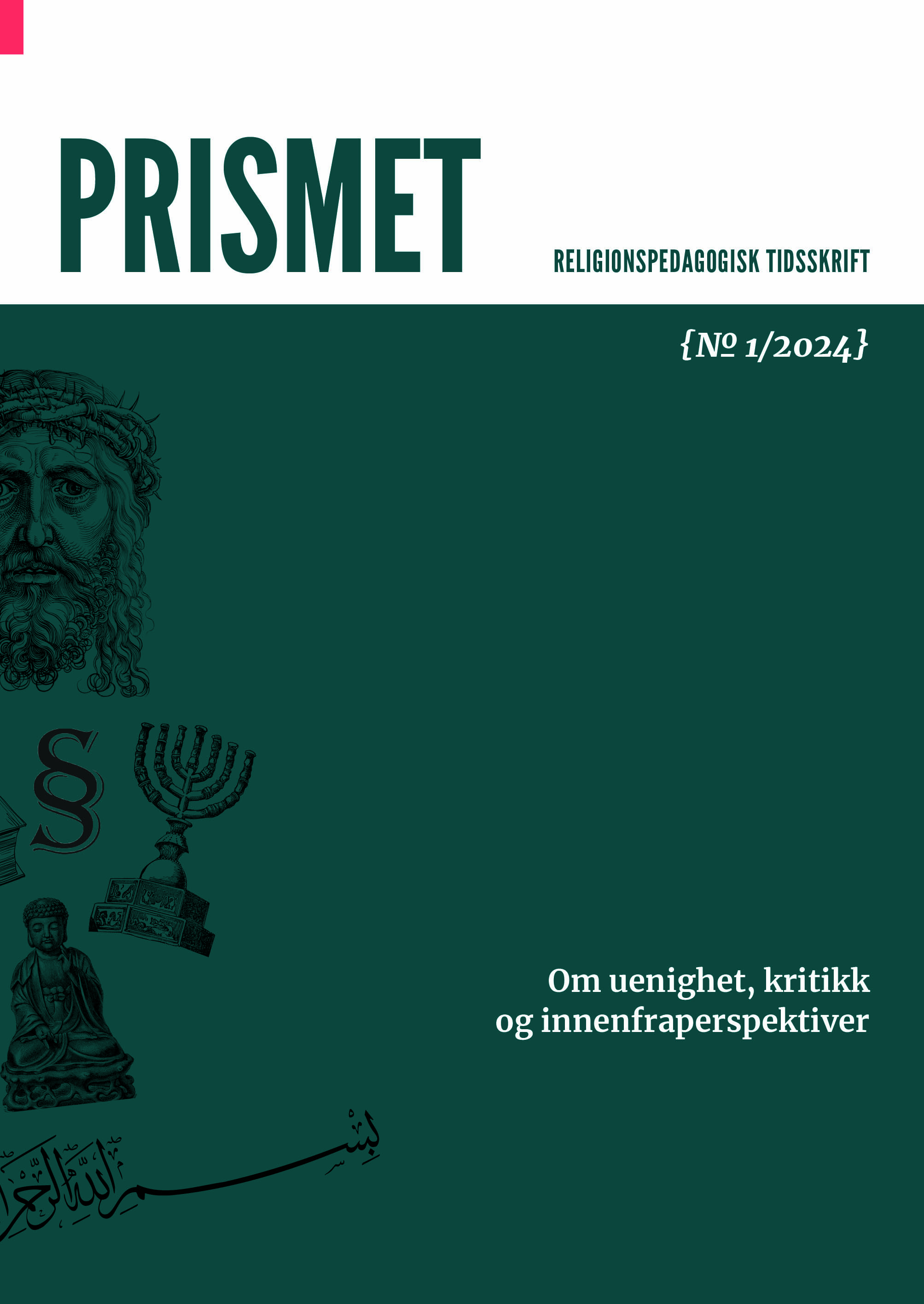«Heksebrenningen var dum. Men – hvorfor skjedde det?»
Utfordringer og muligheter tilknyttet undervisning om religionskritikk
DOI:
https://doi.org/10.5617/pri.11373Abstract
In recent times, criticism of religion has become an important part of the curriculum for upper secondary schools, and is explicitly mentioned as a competence aim in the curriculum for Religion and ethics in LK20. There is still little research on how critique of religion is operationalized in the classroom. This article discusses teaching about criticism of religion in religious education based on 13 interviews with teachers, 4 focus groups with students (n=16), and 4 observations of planned teaching about criticism of religion in Norwegian upper secondary schools. The contribution emphasizes, in dialogue with theory from post-critical pedagogy, the diversity of the criticism of religion as it is articulated by the actors in the schools. The article has three interrelated theoretical arguments: 1) negative criticism of religion still has a place in the subject of religious education, but in conditional forms, 2) negative criticism of religion must be integrated as a part of a comprehensive religious education that also emphasizes constructive perspectives, and 3) criticism of religion is not necessarily only a negative activity, but is also operationalized as a practice aimed at developing analytical skills and increased understanding.
Keywords: Criticism of religion, post-critique, religious didactics, critical thinking
Downloads
Published
Issue
Section
License
Contents published in editions of Prismet in volumes predating 2017 are protected by the Norwegian Copyright Act (http://www.wipo.int/wipolex/en/details.jsp?id=3232). Text and other material published in these journal volumes can only be shared and republished with written permission from article rights holders.
Starting from 2017, the content published in Prismet is - unless otherwise is stated - licensed through Creative Commons License BY-NC 4.0. (https://creativecommons.org/licenses/by-nc/4.0/). Content can be copied, distributed and disseminated in any medium or format under the following terms:
Attribution — You must give appropriate credit, provide a link to the license, and indicate if changes were made. You may do so in any reasonable manner, but not in any way that suggests the licensor endorses you or your use.
Non-Commercial — You may not use the material for commercial purposes.
No additional restrictions — You may not apply legal terms or technological measures that legally restrict others from doing anything the license permits.
Notice: No warranties are given. The license may not give you all of the permissions necessary for your intended use. For example, other rights such as publicity, privacy, or moral rights may limit how you use the material.
Authors who publish in Prismet accept the following conditions:
Author(s) retains copyright to the article and give Prismet rights to first publication while the article is licensed under the Creative Commons CC BY-NC 4.0. This license allows sharing the article for non-commercial purposes, as long as the author and first publishing place Prismet are credited.
The author is free to publish and distribute the work/article after publication in Prismet, as long as the journal is referred to as the first place of publication. Submissions that are under consideration for publication or accepted for publication in Prismet cannot simultaneously be under consideration for publication in other journals, anthologies, monographs or the like. By submitting contributions, the author accepts that the contribution is published in both digital and printed editions of Prismet.



